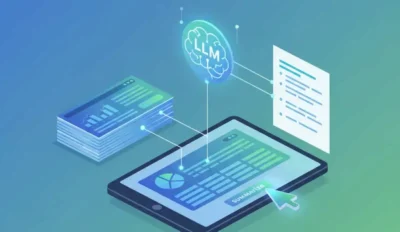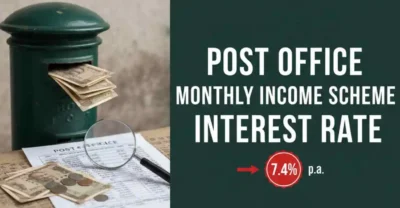Managing personal finances often feels overwhelming, especially when you’re staring at pages of transactions in your monthly bank statement. You’ve probably noticed how repetitive categories (groceries, utilities, subscriptions) make it hard to spot patterns or savings opportunities. That’s exactly where large language models (LLMs)—the same AI technology powering tools like ChatGPT—step in.
In this guide, we’ll break down how to use LLMs to summarize your bank statements, explain their role in banking, and even look at real-world use cases for financial institutions like SBI and other banks.
What Are LLMs in Banking?
LLMs, or Large Language Models, are advanced AI models designed to understand, process, and generate human-like text. In banking, LLMs can analyze unstructured financial data—like transaction descriptions—and turn them into structured, readable insights.
For example:
- Instead of scrolling through 200 transactions, an LLM can categorize them into “Food & Dining: ₹15,000,” “Utilities: ₹4,500,” and “Travel: ₹6,200.”
- They can flag unusual charges like “Duplicate ATM withdrawal” or “Subscription renewal you forgot about.”
So when we ask, “What is the LLM model for banking?”, it refers to specialized AI tools tailored to handle sensitive, high-volume financial data securely and intelligently.
Why Summarize Bank Statements with LLMs?
Traditional financial tracking apps rely on rule-based categorization. But rules can break when transaction descriptions vary. For example:
- “AMAZON MUMBAI” vs. “AMAZON RETAIL” could confuse a rigid system.
- An LLM, however, understands context and groups them together under “Shopping.”
Benefits include:
- Clarity: Clear summaries instead of raw transaction lists.
- Time-saving: Quick insights without manual categorization.
- Pattern recognition: Spot recurring expenses or seasonal spending.
- Fraud detection: Identify suspicious transactions faster.
How to Use LLMs to Summarize Your Bank Statements
Here’s a practical walkthrough of how you can do it:
1. Export Your Bank Statement to Excel or CSV
Most banks allow you to download statements in PDF, Excel, or CSV. LLMs work best with structured formats, so go for Excel or CSV if possible.
2. Preprocess the Data
LLMs don’t like raw clutter. Clean up your file by:
- Removing unnecessary headers and footers.
- Making sure each column is labeled (Date, Description, Amount, Category).
- Standardizing date formats.
This step makes using LLMs to summarize your bank statements in Excel much smoother.
3. Feed the Data to an LLM Tool
There are multiple ways:
- ChatGPT or similar tools: Paste a cleaned-up version of transactions and ask, “Summarize this into categories with totals.”
- Custom scripts with OpenAI API: If you’re comfortable with coding, you can build a Python script that reads your Excel file, sends batches of rows to the LLM, and outputs categorized summaries.
- Fintech integrations: Some startups already integrate LLMs directly into expense-tracking dashboards.
4. Ask Targeted Questions
LLMs shine when you give clear instructions. Instead of just “Summarize this,” try:
- “Group these transactions into food, rent, travel, and entertainment, and give me totals.”
- “Highlight any one-time expenses above ₹5,000.”
- “Which subscriptions are recurring every month?”
5. Review and Validate
AI is powerful but not perfect. Always cross-check the output. For example, if “LIC Insurance Premium” gets categorized under “Entertainment,” you’ll need to correct it.
Example: LLM Summary of Bank Statements
Here’s a simplified view of what an LLM-generated summary might look like:
| Category | Number of Transactions | Total Spent (₹) | Notes |
| Food & Dining | 22 | 14,850 | Multiple Swiggy & Zomato spends |
| Utilities | 8 | 4,600 | Electricity, internet bills |
| Shopping | 10 | 18,200 | Amazon, Myntra purchases |
| Travel | 4 | 6,500 | Uber, Ola, flight tickets |
| Subscriptions | 5 | 2,000 | Netflix, Spotify, Hotstar |
This kind of table gives you instant visibility into where your money is going.
LLM Use Cases in Banking
While summarizing bank statements is great for individuals, banks are adopting LLMs in broader ways.
1. Customer Service
GenAI-powered chatbots are replacing FAQs with real-time, personalized support.
2. Fraud Detection
LLMs analyze language patterns in transactions and flag suspicious ones faster than traditional systems.
3. Credit Risk Analysis
Banks can use finance-specific LLM models to assess customer creditworthiness by analyzing transaction history.
4. Document Processing
Loan agreements, KYC forms, and compliance reports can be summarized instantly.
5. Personalized Financial Advice
Imagine SBI offering insights like, “Your utility expenses are 20% higher than last quarter—consider switching providers.” That’s Gen AI use cases in banking coming to life.
Can AI Summarize Bank Statements?
Yes, and it does so far better than rule-based systems. AI tools like ChatGPT or finance-specific models can group, total, and even generate visual summaries.
Can ChatGPT Analyse Bank Statements?
ChatGPT can analyze transaction data when provided in a clean format. While it’s not a replacement for official financial software, it’s great for personal insights, budgeting, or even catching hidden fees.
Security Concerns: Should You Trust LLMs with Bank Data?
This is a big question. Uploading sensitive financial data to a public AI tool is risky. Best practices include:
- Using anonymized or partial data.
- Running LLMs locally (with open-source models like LLaMA or GPT4All).
- Choosing banking platforms that integrate secure LLMs directly into their apps.
Banks like SBI are already experimenting with LLMs in Banking SBI initiatives where models run securely on internal servers.
The Future: Finance LLM Models and GenAI
The rise of finance-specific LLM models means we’ll soon see tools built just for banks and customers:
- Local models trained only on financial data.
- Built-in compliance checks.
- Direct integration with personal finance apps.
In short, Large Language Models in Banking are no longer just an experiment—they’re the next step in financial automation.
FAQs
1. Can AI summarize bank statements?
Yes, AI can categorize, total, and highlight unusual transactions much faster than manual methods.
2. Can ChatGPT analyse bank statements?
ChatGPT can process structured bank statement data and provide summaries, insights, or even budgeting suggestions.
3. What is the LLMs in Banking?
It’s a specialized large language model trained to handle financial data, compliance rules, and customer support needs in banking.
4. How to use LLMs to summarize your bank statements in Excel?
Export your statement to Excel, clean it up, and feed it into an LLM with clear instructions like “Group by category and give totals.”
5. What are some LLM use cases in banking?
Customer service, fraud detection, risk assessment, document summarization, and personalized financial insights are major use cases.
Key Takeaways
LLMs make handling financial data easier, smarter, and faster. From summarizing your personal bank statements to transforming how banks like SBI manage customer interactions, the potential is huge.
If you’ve been overwhelmed by transaction lists, try experimenting with an LLM tool to turn them into clear, actionable insights.
What’s your take on this topic? Have you tried AI for managing your finances yet? Share your thoughts in the comments!





